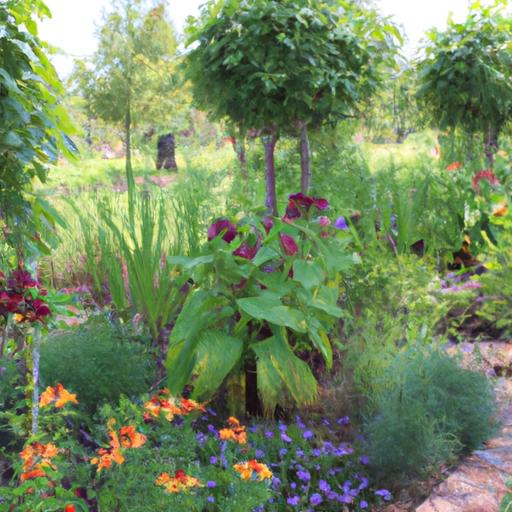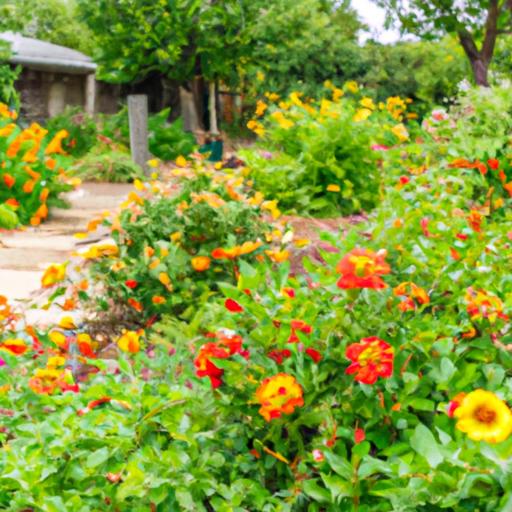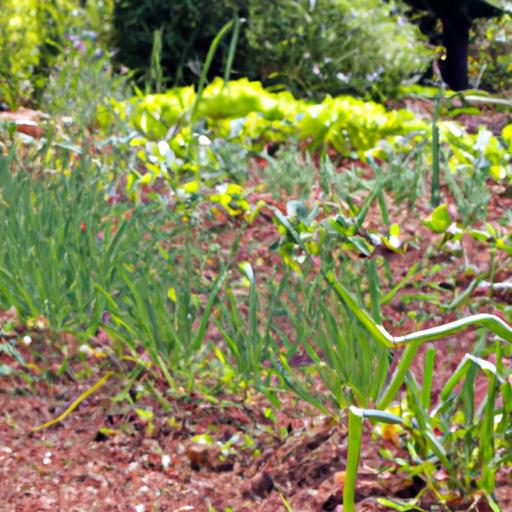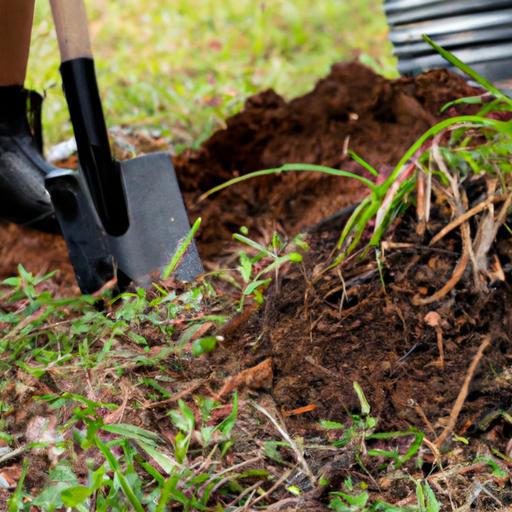Have you ever wondered where exactly Zone 5 is for gardening? If you’re an avid gardener or simply someone with a green thumb, understanding gardening zones is crucial for cultivating a thriving garden. In this article, we will delve into the world of gardening zones, with a particular focus on Zone 5. So, let’s embark on this horticultural journey together and uncover the secrets of Zone 5 gardening.
Introduction
Gardening zones are like a roadmap that guides you towards the right plants and optimal gardening practices for your specific location. These zones provide valuable insights into the climate, temperature ranges, and growing conditions of a particular region. By familiarizing ourselves with gardening zones, we can make informed decisions about what to plant and how to care for our beloved greenery.
Understanding Gardening Zones
Before we dive into Zone 5, let’s take a moment to understand what gardening zones are all about. Gardening zones are geographical areas categorized based on their climate conditions, particularly minimum temperatures. These zones help gardeners determine which plants are most likely to thrive in their specific region.
The United States Department of Agriculture (USDA) Hardiness Zone Map is one of the most widely used systems for defining gardening zones in North America. This map divides the United States and Canada into several zones, each labeled with a number indicating the average annual minimum temperature. Zone 1 represents the coldest regions, while Zone 13 represents the warmest.
Focus on Zone 5
Now, let’s turn our attention to Zone 5, a region that encompasses various areas across North America. Zone 5 is characterized by its moderate to cool climates, experiencing cold winters and warm summers. It typically covers parts of the United States, including the Midwest, New England, and the Rocky Mountains, as well as some regions in Canada.
Gardening in Zone 5 comes with its own set of challenges and rewards. The average annual minimum temperature in Zone 5 ranges from -20°F (-28.9°C) to -10°F (-23.3°C), resulting in a relatively short growing season. However, with proper planning and suitable plant selection, Zone 5 gardeners can still enjoy a bountiful harvest and vibrant floral displays.
In the upcoming sections of this article, we will explore the ideal plants for Zone 5 gardening, essential tips for success, and more. So, stay tuned to unearth the secrets of gardening in Zone 5 and discover how you can create a thriving garden in this unique zone.
Now that we have grasped the significance of gardening zones and Zone 5’s distinctive characteristics, it’s time to dig deeper and explore the ideal plants for Zone 5 gardening. In the next section, we will uncover an array of plants that flourish in Zone 5, bringing beauty and abundance to your garden.
Understanding Gardening Zones
Definition of Gardening Zones
Gardening zones are geographical divisions that categorize regions based on their climate conditions, specifically minimum temperatures. These zones help gardeners determine the suitability of various plants for their specific location. By understanding the gardening zone you reside in, you can make informed decisions about selecting plants that are most likely to thrive in your area.
Explanation of How Zones are Determined
The determination of gardening zones involves analyzing historical weather data, particularly the average annual minimum temperatures. This data is collected from numerous weather stations across a specific region. By analyzing these temperature patterns, experts can identify the boundaries of each gardening zone.
Factors such as elevation, proximity to bodies of water, and local topography can also influence the temperature variations within a zone. Therefore, gardening zones are not solely determined by latitude or longitude but take into account these additional factors that impact local microclimates.
Brief Mention of the United States Department of Agriculture (USDA) Hardiness Zone Map
One of the widely recognized systems for defining gardening zones in North America is the United States Department of Agriculture (USDA) Hardiness Zone Map. This map divides the United States and Canada into several zones, each assigned a numerical value representing the average annual minimum temperature range.
The USDA Hardiness Zone Map serves as a valuable resource for gardeners, helping them identify the specific zone they belong to. With this information, gardeners can make informed decisions about plant selection, considering the temperature ranges and climatic conditions associated with their zone.
Now that we have a solid understanding of gardening zones and how they are determined, let’s turn our attention to Zone 5, where we will explore its unique characteristics and discover the ideal plants for this region in the next section.
What is Zone 5?
Detailed Description of Zone 5 for Gardening
Zone 5 is a fascinating region for gardeners, offering a unique blend of climate conditions that shape the gardening experience. Situated in various parts of North America, Zone 5 encompasses geographic regions known for their distinctive landscapes and diverse flora. From the picturesque valleys of the Midwest to the breathtaking peaks of the Rocky Mountains, Zone 5 presents an array of gardening opportunities.
Geographical Regions Included in Zone 5
Zone 5 covers a wide expanse of territories, including parts of the United States and Canada. In the United States, Zone 5 extends across the heartland of the country, encompassing states like Illinois, Indiana, Iowa, Michigan, Minnesota, Missouri, and Wisconsin. It also reaches into New England, encompassing states such as Maine, Vermont, New Hampshire, and parts of Massachusetts.
In Canada, Zone 5 stretches across regions of Alberta, Manitoba, Saskatchewan, and parts of British Columbia and Ontario. These areas boast breathtaking landscapes, from the majestic Canadian Rockies to the serene prairies and lush forests, making Zone 5 a diverse and captivating zone for gardening enthusiasts.
Climate Conditions and Temperature Ranges Typical for Zone 5
When it comes to climate conditions, Zone 5 experiences a temperate climate with distinct seasons. Summers in Zone 5 are warm and often accompanied by occasional rainfall, providing ideal conditions for plant growth. Winters, on the other hand, can be cold and snowy, with temperatures dropping to frigid levels.
The average annual minimum temperature in Zone 5 ranges from -20°F (-28.9°C) to -10°F (-23.3°C). This means that gardeners in Zone 5 must be prepared for frost and shorter growing seasons. However, with careful planning and the use of protective measures, such as mulching and cold frames, gardeners can extend their growing season and enjoy the beauty of their plants throughout the year.
In the next section, we will explore the ideal plants that thrive in Zone 5, helping you create a vibrant and flourishing garden in this unique gardening zone.
As we unravel the secrets of Zone 5, it becomes evident that this zone offers a diverse range of climates and breathtaking landscapes. In the upcoming section, we will delve into the ideal plants that flourish in Zone 5, allowing you to transform your garden into a vibrant oasis of colors and scents.
Ideal Plants for Zone 5 Gardening
When it comes to gardening in Zone 5, selecting the right plants is crucial for a successful and thriving garden. In this section, we will introduce you to a variety of plants that are well-suited for Zone 5 conditions. From vibrant flowers to majestic trees, hardy shrubs, and delicious vegetables, there’s something for every gardener in Zone 5.
Introduction to Plants Suitable for Zone 5
Zone 5 offers a diverse range of plant options that can withstand its cold winters and relatively short growing season. Whether you’re looking to add color to your flower beds, create a lush landscape, or grow your own fresh produce, Zone 5 has plenty of choices to offer.
Popular Flowers, Trees, Shrubs, and Vegetables for Zone 5
-
Flowers: Embrace the beauty of Zone 5 with flowers that can withstand its climate. Consider planting hardy perennials like coneflowers, black-eyed Susans, and daylilies. For a burst of color, annuals such as marigolds, zinnias, and petunias thrive in Zone 5 gardens.
-
Trees: Add shade, structure, and beauty to your landscape with trees that flourish in Zone 5. Opt for varieties like maple, oak, birch, and dogwood. These trees not only provide aesthetic appeal but also offer shelter to birds and other wildlife.
-
Shrubs: Enhance your garden with hardy shrubs that can withstand Zone 5 conditions. Consider planting lilacs, hydrangeas, spirea, and potentilla. These shrubs offer stunning blooms, foliage, and often attract pollinators to your garden.
-
Vegetables: Don’t miss out on the joy of growing your own fresh vegetables in Zone 5. Start your vegetable garden with cold-hardy crops like lettuce, spinach, kale, and radishes, which can be planted early in the season. As the weather warms up, you can grow tomatoes, peppers, cucumbers, and beans.
Consideration of Frost Dates and Growing Seasons in Zone 5
In Zone 5, it’s essential to consider frost dates and the length of the growing season. Frost dates indicate the average dates of the last spring frost and the first fall frost. By knowing these dates, you can plan your planting schedule accordingly, ensuring that your plants have ample time to grow and mature before the first frost arrives.
Additionally, take into account the length of the growing season in Zone 5. With a shorter growing season compared to warmer zones, it’s important to select plants that have a quicker maturation time or are suitable for colder temperatures.
Now that we’ve explored the ideal plants for Zone 5 gardening, it’s time to equip ourselves with valuable tips and techniques to ensure success in our Zone 5 gardens. In the next section, we will delve into the essential strategies for gardening triumph in Zone 5.
Tips for Successful Gardening in Zone 5
Gardening in Zone 5 can be a rewarding experience, but it requires careful planning and implementation of specific techniques tailored to this unique zone. To help you achieve gardening success in Zone 5, here are some invaluable tips to keep in mind.
Importance of Soil Preparation and Maintenance
One of the first steps to ensure a thriving garden in Zone 5 is proper soil preparation. Start by testing the pH level of your soil to determine its acidity or alkalinity. Most plants prefer a slightly acidic to neutral pH range, around 6.0 to 7.0. Adjusting the soil’s pH, if necessary, can greatly enhance your plants’ ability to absorb nutrients and thrive.
Additionally, Zone 5 gardeners should focus on improving soil structure and fertility. Incorporating organic matter, such as compost or well-rotted manure, helps improve drainage, retain moisture, and provide essential nutrients for plant growth. Regularly adding organic matter and mulching your garden beds will contribute to long-term soil health and fertility.
Recommended Gardening Techniques Specific to Zone 5
In Zone 5, where the growing season can be relatively short, it is crucial to make the most of the available time. Consider utilizing techniques like starting seeds indoors or using season extenders, such as cold frames or row covers, to protect delicate plants from early frosts or extend the growing season in the fall.
Succession planting is another technique that can maximize your garden’s productivity. By stagger planting different varieties or crops with varying maturity dates, you can ensure a continuous harvest throughout the growing season. This technique allows you to make the most of your limited time and space.
Guidance on Watering, Mulching, and Fertilizing in Zone 5
Proper watering is essential for the health and vitality of your plants, especially in Zone 5 where drought conditions can occur. It’s important to water deeply and infrequently, allowing the soil to dry slightly between watering sessions. This encourages plants to develop deep and robust root systems, making them more resilient to drought.
Mulching plays a crucial role in conserving moisture, suppressing weeds, and regulating soil temperature. Apply a layer of organic mulch around your plants, such as wood chips or straw, to help retain moisture and provide insulation during temperature fluctuations.
When it comes to fertilizing, Zone 5 gardeners should focus on using slow-release organic fertilizers. These provide a steady supply of nutrients to plants over time, promoting healthy growth and reducing the risk of nutrient imbalances. Avoid over-fertilizing, as it can harm plants and contribute to water pollution.
By following these essential tips for successful gardening in Zone 5, you can overcome the challenges and create a thriving garden that will bring you joy and beauty throughout the seasons. With the right techniques and care, your Zone 5 garden will flourish, rewarding you with a bountiful harvest and a picturesque outdoor sanctuary.
Conclusion
As we conclude our journey through the world of gardening zones and Zone 5, we hope you have gained valuable insights into the importance of understanding your specific gardening zone. Zone 5 offers a unique opportunity for gardeners to embrace the challenges and rewards that come with its moderate to cool climates.
By selecting plants that are well-suited to Zone 5, properly preparing and maintaining the soil, and following the recommended gardening techniques, you can create a thriving garden that will be the envy of your neighbors. Remember to consider the frost dates and growing seasons specific to Zone 5 when planning your gardening activities.
Whether you’re planting colorful flowers, sturdy trees, lush shrubs, or delicious vegetables, Zone 5 has a wealth of options to explore. Take advantage of the diverse plant selection available for this zone and let your creativity flourish.
Gardening in Zone 5 is not just a hobby; it’s a journey of growth, patience, and connection with nature. So, grab your gardening tools, get your hands dirty, and embark on this horticultural adventure. Let Zone 5 be your canvas, and watch as your garden transforms into a masterpiece.
Remember, gardening is not just about the final result, but also the joy and fulfillment it brings along the way. So, embrace the challenges, appreciate the beauty, and revel in the wonders of gardening in Zone 5.
Happy gardening!




